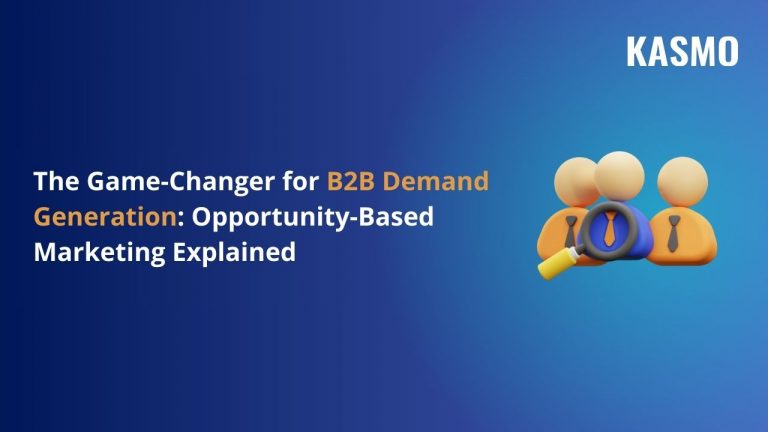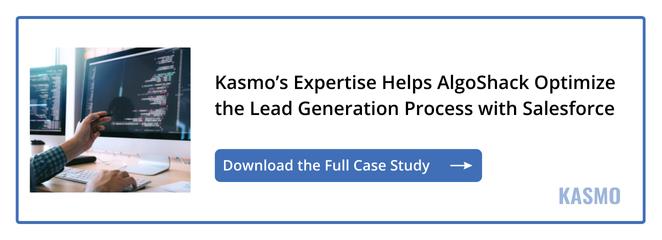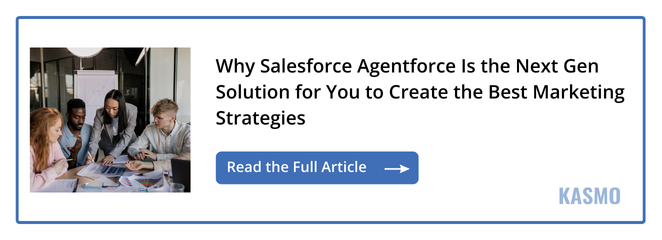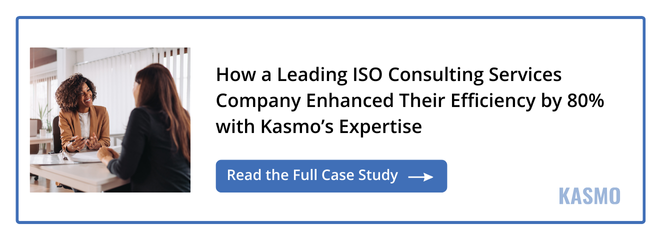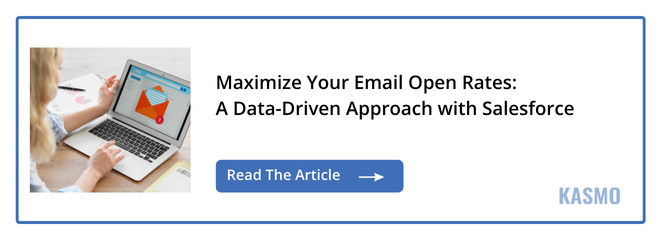What is Opportunity-Based Marketing (OBM) and How Does it Affect B2B Demand Generation?
B2B businesses often need to refigure and rethink their marketing strategies. Why? In the B2B sector, there are different types of businesses with different goals and requirements. Tailoring your marketing strategies for a better B2B demand generation requires knowing about every single lead that has the potential to turn into an opportunity.
Before you launch a product or service in the market, you need to understand and uncover what are the challenges your product or service can solve and how does it differentiate from other products in the market. With STP marketing, you can easily identify and segment your audience, which will help you to create successful B2B demand generation techniques.
However, this might seem a lengthy process and the entire process of generating leads, nurturing them, and passing them off to the sales team can seem to be cumbersome. As B2B buying processes become increasingly complex, this linear approach has begun to show its limitations. This is where opportunity based marketing comes into play.
Opportunity-Based Marketing (OBM) offers a more dynamic, proactive approach. It helps your sales team to zero in on the buying groups within the account created by the sales team. In account-based marketing, you need to align your marketing, sales and service teams to tailor offers and recommendations to the account. But with OBM you are creating a more focused marketing strategy that resonates with the key decision-makers of the account.
Let’s understand with an example. Company A sells software to businesses that will help them streamline their customer support. The point of contact (POC) for Company B is eager to purchase the software, but the key decision-makers are also looking forward to a solution that can elevate their entire customer experience and not just customer support, all the while staying within the budget.
In this stage, if company A only focuses on personalizing recommendations to the POC, and not the stakeholders, then there is a slim chance of converting this account into an opportunity. The decision-makers of the company can easily move on to another business that is ready to cater to all their demands.
But with OBM, company A can avoid losing out on clients. How?
OBM allows marketing and sales teams to collaborate and engage with the entire buying groups, not just singular contacts. This allows company A to reach key decision-makers earlier in the buying journey, take note of their requirements, tailor recommendations accordingly, and increase conversions.
Benefits of Leveraging Opportunity Based Marketing for B2B Demand Generation
Accelerated Lead Conversion: Opportunity based Marketing (OBM) empowers marketers to focus on high-value opportunities that are already in motion, significantly speeding up the lead conversion process. With a clear understanding of the prospects’ needs, pain points, and decision-making triggers, marketing teams can nurture leads more effectively, driving faster responses and higher conversion rates.
Targeted Messaging: OBM ensures that marketing efforts are deeply aligned with the buying cycle of prospects. This allows for hyper-targeted messaging that speaks directly to the current needs and challenges of potential customers, resulting in better engagement and an improved chance of winning the deal.
Optimized Resource Allocation: By concentrating on pre-identified opportunities, marketers can optimize their time, budget, and manpower. Rather than casting a wide net with generalized content, OBM helps streamline efforts towards leads who are already demonstrating intent, maximizing ROI.
Improved Customer Insights: Through continuous collaboration with the sales team, marketers gain deeper insights into customer behaviors, preferences, and pain points. This data-driven approach enables more personalized and compelling marketing campaigns that resonate with B2B audiences, fostering trust and long-term relationships.
Sales and Marketing Alignment: OBM strengthens the partnership between sales and marketing teams, aligning their goals and efforts toward a common objective. With both teams working on the same set of identified opportunities, communication is streamlined, and execution becomes more cohesive, leading to increased revenue growth.
Scalable Demand Generation: As OBM focuses on tapping into existing opportunities and nurturing them, it allows companies to scale B2B demand generation strategies with more precision. Rather than starting from scratch, marketers can continuously build on a foundation of high-potential leads.
How OBM Transforms B2B Demand Generation
The traditional method of focusing on generating leads—often one lead at a time—can be restrictive and time-consuming. With OBM, marketers can significantly enhance the relevancy of their efforts by ensuring they engage with multiple key stakeholders within an account at once.

Source: Gartner
Rather than a generic email blast to a list of leads, OBM approach helps the marketing team create better B2B demand generation by crafting tailored messages that are customized for the various members of a buying group, addressing everyone’s unique concerns and roles in the decision-making process.
Here are few more ways how OBM approach helps your marketing teams to create the best B2B demand generation strategies:
- Better Conversion Rates – With this approach, your marketing teams can make email marketing and campaigns tailored to the buying groups within an account. Using OBM approach allows your marketing teams to focus on existing opportunities as well as new leads. They can now generate more relevant content for prospects, helping your sales teams to convert more leads into opportunities.
- Increased Efficiency – Opportunity based marketing also helps B2B marketers to concentrate their efforts on high-potential opportunities, optimizing resource allocation.
By building marketing strategies around these buying groups, OBM creates a more agile, efficient, and impactful approach to demand generation.
How You Can Implement OBM strategies In Your Organization with Salesforce
Implementing OBM effectively requires close collaboration between your sales and marketing teams. The key is aligning both departments around shared goals, utilizing a unified set of tools to support these efforts. One of the most powerful platforms for creating the best OBM strategies is Salesforce, one of the leading cloud-based CRM and marketing solutions that helps organizations synchronize their efforts and create personalized, data-driven campaigns.
Salesforce offers solutions like Sales Cloud and Marketing Cloud Account Engagement to seamlessly integrate sales and marketing data, allowing both teams to collaborate on the same opportunities. This ensures that marketing is aware of emerging leads early on and can tailor campaigns that align with the sales team’s efforts.
Overcoming Challenges in OBM Implementation with Kasmo’s Salesforce Expertise
Despite the clear benefits of OBM, it can be challenging to implement. Common hurdles include lack of data integration, resistance to change, and ensuring that both sales and marketing teams fully embrace the opportunity-based approach.
To overcome these challenges, partner with Kasmo. We are a proud Salesforce partner, and our experts help you use Salesforce’s Marketing Cloud Account Engagement and Sales Cloud for opportunity identification and personalized engagement. As you gain momentum, we will help you scale the process with tools like Data Cloud and Agentforce to help you gain deeper insights into customer behavior.
Tips to Create the Best B2B Demand Generation Strategies with OBM Approach
Creating a successful B2B demand generation strategy with the OBM approach requires a combination of strategic thinking, leveraging Salesforce’s tools, and effective collaboration. Here are several key tips to ensure your OBM strategies are effective:
Identifying Opportunities with OBM
Before diving into personalized marketing campaigns, it’s important to first identify the key accounts. Work closely with your sales team to spot the accounts that are currently in active buying cycles. This could involve tracking engagement with content, product usage, or interactions with your website.
Salesforce provides robust opportunity tracking tools, which allow you to easily see where leads are in the buying process, how they’re interacting with your brand, and their pain points. This insight will help you prioritize your marketing efforts toward high-value opportunities.
Building Effective Buyer Personas
With OBM, you’re not just targeting individual leads but entire buying groups. Therefore, it’s crucial to develop detailed buyer personas that represent the different stakeholders within an organization. These personas should go beyond basic demographics and include factors such as:
- Decision-making role – Understanding who has the final say in the purchase process.
- Pain points and needs – What problems does each person on the buying committee need solved?
- Engagement history – What content or touchpoints has each stakeholder interacted with?
By using Salesforce’s Agentforce, you can dig into detailed customer profiles, enabling you to personalize your outreach and messaging for each member of the buying group.
Personalizing Marketing and Sales Efforts for Greater Engagement
Personalization is at the heart of OBM. To drive engagement and conversion, tailor your messaging for the different roles within the buying group. This includes not just email but all forms of communication, such as:
- Website content – Dynamic content that adapts to the user’s journey.
- Email – Use personalized subject lines, body text, and offers that resonate with each stakeholder.
- Ads – Segment your target audience and serve tailored ads based on their interests and needs.
Continuous Optimization for Ongoing Success
As with any marketing strategy, continuous testing and optimization are essential for ongoing success. Regularly monitor the performance of your email marketing campaigns and adjust based on metrics such as engagement rates, conversion rates, and revenue generated. Tools like Salesforce’s Marketing Cloud Analytics and Agentforce allow you to measure and refine your campaigns for maximum impact.
Conclusion
Opportunity-Based Marketing (OBM) offers a fresh, strategic approach to your B2B demand generation. By aligning sales and marketing efforts according to buyer groups within accounts, OBM ensures that both teams work together to engage the right decision-makers, at the right time, with the right message.
By leveraging the power of Salesforce’s integrated tools and partnering with Kasmo, marketers can identify, prioritize, and nurture opportunities more effectively, improving their ROI and driving faster sales cycles. If you want to elevate your B2B marketing strategies, the shift to OBM is more than just a trend—it’s a necessary evolution to stay competitive and meet the demands of modern buyers.
